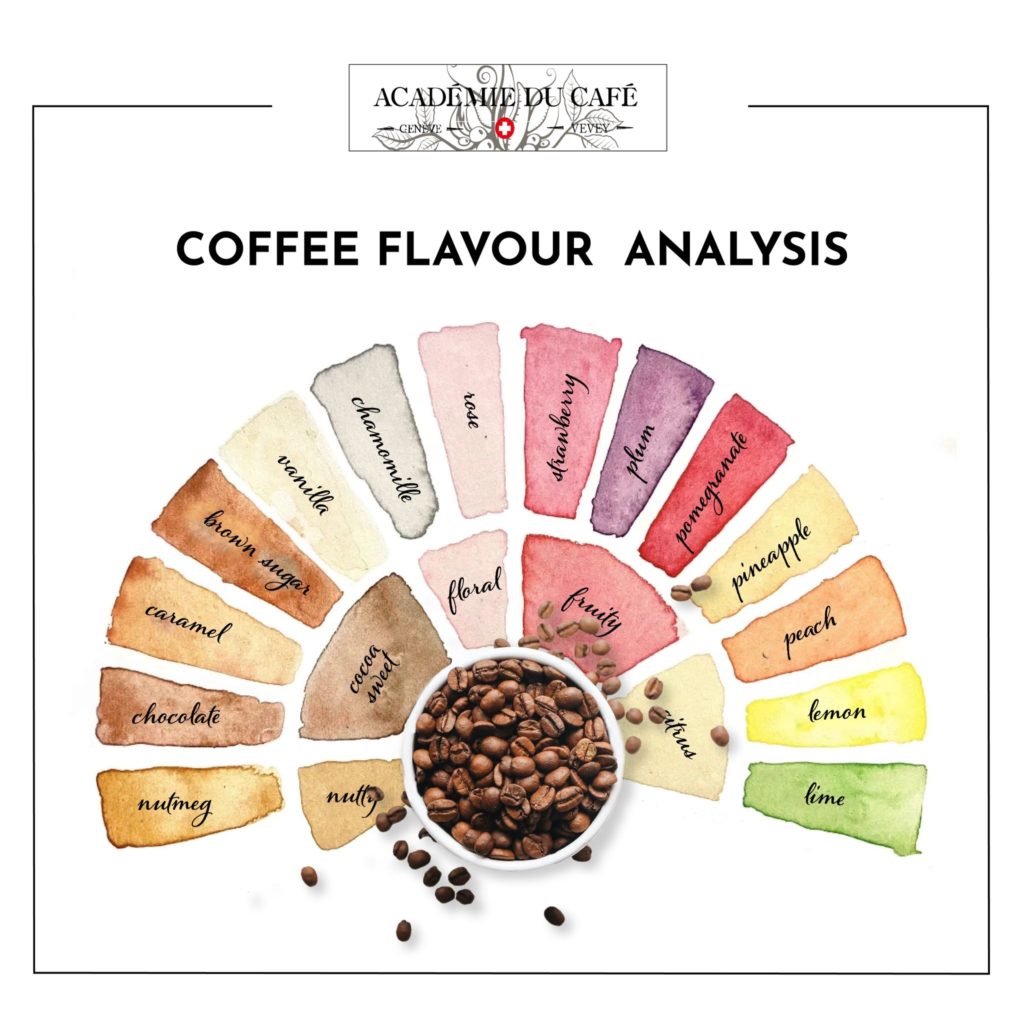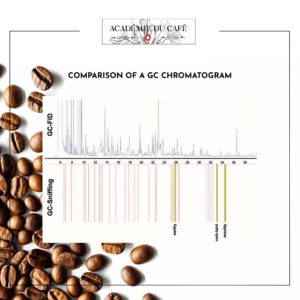
Example of the use of Gas Chromatography and Olfactometry
Gas chromatography (GC) stands as a paramount analytical method in the field of coffee flavour analysis. The intrinsic value of GC in coffee analysis lies in its robust separation capabilities. When a coffee sample undergoes GC analysis, it is first vaporized and then transported through a chromatographic column by an inert carrier gas, typically helium. As the vaporized compounds traverse the column, they interact with the column’s stationary phase, causing each compound to elute at a different rate. This differential elution allows the compounds to be separated from one another as they are carried to the detector, where they are identified and quantified.
The coupling of GC with various detectors enhances its analytical power, especially Mass elective Detection (MSD), Flame Ionization Detection (FID) or Flame Photometric Detection for sulphur compounds. Gas chromatography-olfactometry (GC-O) is another innovative application wherein human sensory analysis is integrated with GC. In this technique, a panel of trained assessors smells the effluent from the GC column and records the odor characteristics and intensity at different time points. This approach allows for the direct correlation of sensory perception with chemical data, highlighting the impact of specific compounds on the overall aroma of coffee.
An interesting application of GC/O was the identification of the chemicals responsible for the mouldy/earthy off-notes found in lots of green Mexican coffee (Cantergiani et al., 2010). This allowed identification of several important differences between the extracts that are related to the off-flavour . In particular, earthy, green, chemical and mouldy chromatographic zones were located that could be identified as being 2-Methyl isoborneol, 2,4,6-Trichloroanisole, Geosmin and various Pyrazines.
From this example, it is clear that GC/O is particularly efficient at identifying the main olfactive defaults of the defective sample relative to the reference. It offsets the lack of sensitivity for low concentration flavour active compounds encountered with other detection systems.
